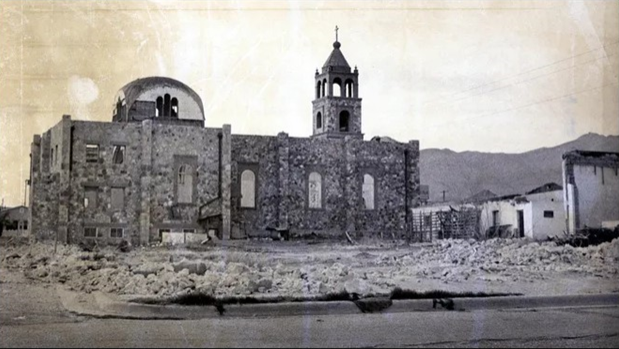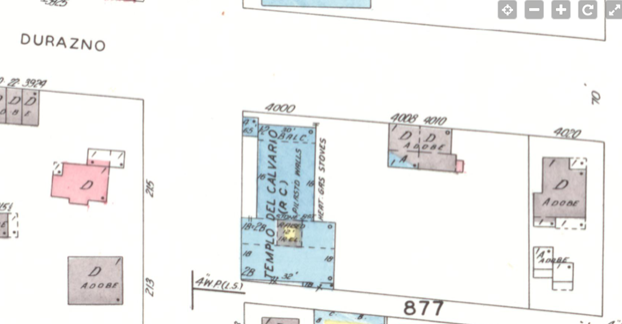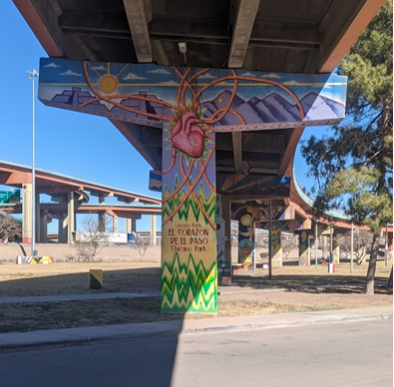El Calvario Catholic Church: A Cultural and Historical Landmark in El Paso, Texas
- Tatiana Rodriguez
- Jun 13, 2024
- 3 min read
By Ernest McClure
In the early 20th century, the Lincoln Park neighborhood in El Paso, Texas was a vibrant, diverse community experiencing rapid growth. As new residents arrived, they sought a place of worship to unite them, regardless of their backgrounds. The answer to their prayers came from a humble, determined Spanish priest named Reverend Francisco Pacheco.
Upon his arrival in El Paso in 1933, Father Pacheco quickly took on the role of spiritual leader for the local Catholic community. He recognized the need for a church in the Lincoln Park neighborhood and embarked on a mission to build one. With the help of devoted residents who donated their time, labor, and materials, the construction of El Calvario Catholic Church began.
The church's walls were handcrafted using stones gathered from the nearby Franklin Mountains, reflecting the dedication and love the community poured into the project. Throughout the construction process, the people of Lincoln Park came together, hosting fundraising events such as bazaars, enchilada dinners, theatrical shows and magic shows to finance the building of their beloved church.
Completed in 1934, El Calvario Catholic Church soon became the heart of the community, providing a place for residents to celebrate their faith, cultures, and heritages. In addition, the church was fundamental to the Mexican American community, which had long faced discrimination and marginalization in El Paso. As the years passed, El Calvario remained a beacon of hope and unity for the people of Lincoln Park. During the Great Depression, unemployed men from the neighborhood would spend their days working on the church grounds, finding solace and purpose in their labor.
However, the thriving community was dealt a devastating blow in 1970 when El Calvario was demolished to make way for Interstate 10, a significant infrastructure project connecting U.S. 54 to the Bridge of Americas Port of Entry. The residents of Lincoln Park deeply felt the loss of their cherished church, who had fought tirelessly to preserve the historic landmark. In the years following the demolition of El Calvario, the people of Lincoln Park sought ways to keep the spirit of their beloved church alive. The once-hallowed grounds where the church had stood were then cast in the shadows of towering highway overpasses. Yet, the community refused to let the memory of El Calvario fade away. Instead, they transformed the space beneath the concrete giants into a vibrant gathering place where they continued to celebrate their faith and cultures.
The residents of Lincoln Park found solace and connection in their resourcefulness, organizing religious events, cultural celebrations, and community gatherings under the freeway overpasses, a testament to the resilience and determination of the Lincoln Park community. With time, these spaces became sacred in their own right, imbued with the same love, faith, and dedication that had once brought El Calvario to life. Even today, the memory of El Calvario Catholic Church serves as a source of inspiration and pride for the people of El Paso -- a poignant reminder of the power, unity, and enduring strength of a community united by faith.
References:
"August 9, 1935 (Page 7 of 16)." 1935. El Paso Herald-Post (1931-1997), Aug 09, 7. https://utep.idm.oclc.org/login?url=https://www.proquest.com/historical-newspapers/august-9-1935-page-7-16/docview/2732654839/se-2
"February 21, 1970 (Page 3 of 29)." 1970.El Paso Herald-Post (1931-1997), Feb 21, 3. https://utep.idm.oclc.org/login?url=https://www.proquest.com/historical-newspapers/february-21-1970-page-3-29/docview/2733988820/se-2.
Juárez, Miguel. 2018. "From Concordia to Lincoln Park, an Urban History of Highway Building in El Paso, Texas." Order No. 10813963, The University of Texas at El Paso. https://utep.idm.oclc.org/login?url=https://www.proquest.com/dissertations-theses/concordia-lincoln-park-urban-history-highway/docview/2055729262/se-2.
Okla A. McKee, “El Paso, Catholic Diocese of,” Handbook of Texas Online, https://www.tshaonline.org/handbook/entries/el-paso-catholic-diocese-of.
Sanborn Fire Insurance Map from El Paso, El Paso County, Texas. Sanborn Map Company, Republished 1954 Vol. 2, 1954. Map. https://www.loc.gov/item/sanborn08514_017/.
Trish Long, “Tales from the Morgue: Former Members Mourn Passing of El Calvario, El Paso Times, July 22, 2009.









Comments